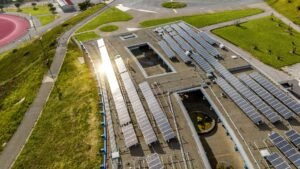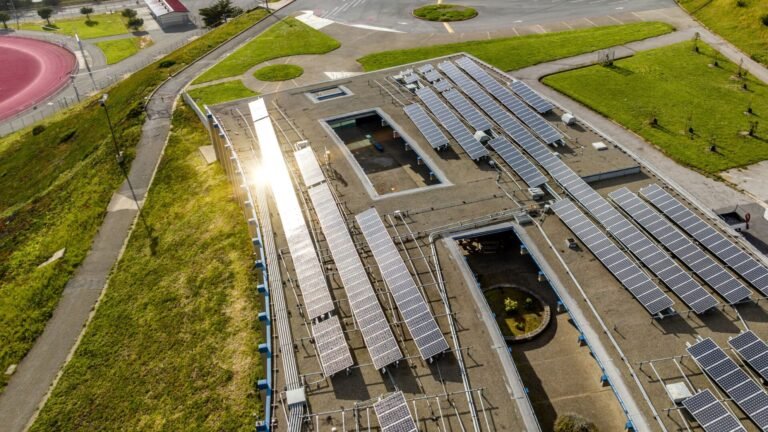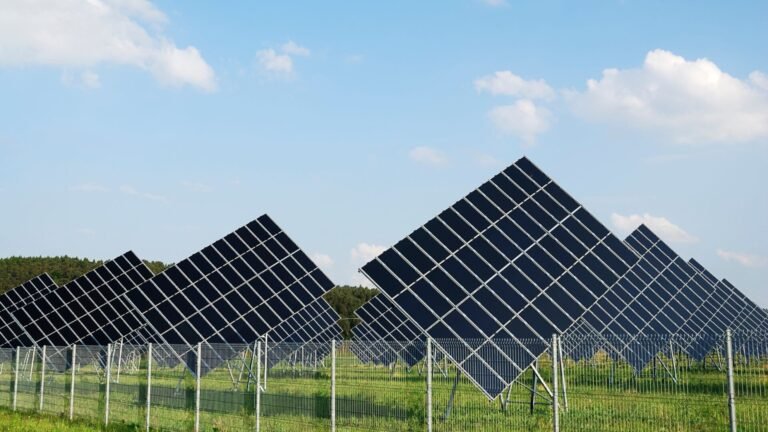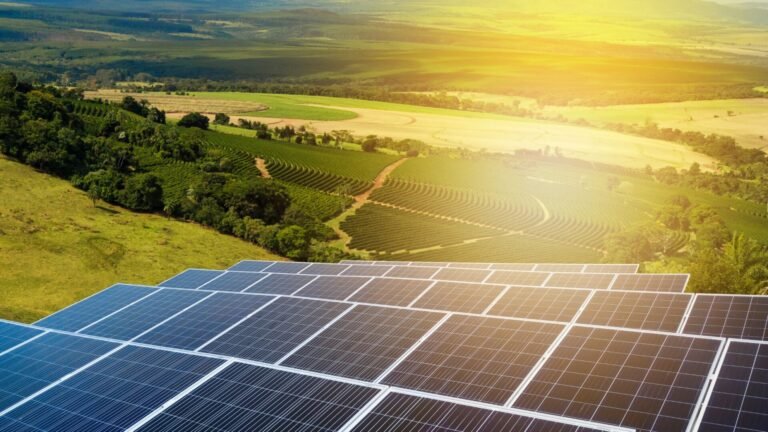Building Integrated Photovoltaics (BIPV) are at the forefront of innovation in the sustainable architecture sector, seamlessly integrating solar energy systems into building facades, roofs, windows, and other architectural elements.
This integration not only enhances the aesthetic appeal of buildings but also contributes significantly to energy efficiency and sustainability.
The continuous advancements in BIPV materials and designs are setting new standards for green building practices and renewable energy utilization.
The Evolution of BIPV Materials
The evolution of BIPV materials marks a significant shift in sustainable building practices. Initially reliant on crystalline silicon panels, the field has embraced more innovative and versatile options like perovskites, organic photovoltaics (OPVs), and transparent solar cells.
These newer materials boast numerous advantages, such as enhanced efficiency, greater flexibility, and seamless architectural integration. Perovskite solar cells, in particular, are celebrated for their remarkable efficiency and cost-effectiveness, making them a sought-after choice for BIPV applications.
This diversification in materials not only broadens the scope for architectural creativity but also improves the energy efficiency of buildings, underscoring the dynamic progression of BIPV technologies towards more sustainable and aesthetically pleasing solutions.
The adaptation to these advanced materials demonstrates a commitment to optimizing energy generation while maintaining or enhancing the visual appeal of buildings, offering a promising future for the integration of renewable energy in urban and residential environments.
Design Innovations
Design Innovations in BIPV technology have significantly broadened the scope beyond traditional rooftop installations, embracing entire building envelopes, including facades, windows, and shading systems.
These advancements empower architects to craft buildings that are both energy-efficient and aesthetically compelling. Innovatively, solar glass panels can now be customized in a myriad of colors and patterns, ensuring a harmonious blend with the architectural design, and thereby elevating the visual appeal of buildings.
This evolution towards integrating solar technology with design flexibility reflects a growing trend where functionality meets aesthetics, paving the way for buildings that not only generate their own energy but also contribute positively to the urban landscape.
The move towards customizable and aesthetically versatile BIPV solutions exemplifies the industry’s commitment to merging sustainable energy production with cutting-edge design, offering a promising outlook for the future of urban architecture and green building practices.
Technological Breakthroughs
Technological breakthroughs in recent years have dramatically enhanced the capabilities and efficiency of BIPV systems.
Innovations have been particularly impactful in areas such as energy conversion efficiency, where advancements have led to significantly higher rates of sunlight-to-electricity conversion.
Additionally, the development of advanced energy storage solutions allows buildings to retain excess power for later use, ensuring a constant energy supply regardless of weather conditions.
Smart energy management systems have also been pivotal, employing sophisticated algorithms to optimize the balance between energy production, storage, and consumption.
These systems enable a more intelligent and efficient use of generated power, contributing to the overall energy independence of buildings.
Together, these technological advancements are setting new standards for sustainable building practices, pushing the boundaries of what’s possible in energy generation and management.
Addressing Challenges
Despite the progress, the adoption of BIPV faces challenges such as high initial costs, integration complexities, and regulatory barriers. However, solutions are emerging through ongoing research and development efforts.
Cost-reduction strategies, flexible installation techniques, and supportive policies are gradually overcoming these obstacles, making BIPV more accessible and appealing to a broader market.
Case Studies
Real-world applications of BIPV demonstrate its potential and versatility. From commercial buildings and residential homes to public infrastructure, BIPV systems have been successfully integrated into diverse projects worldwide.
These case studies not only showcase the aesthetic and functional benefits of BIPV but also highlight its role in reducing carbon footprints and promoting sustainability.
The Future of BIPV
The outlook for Building Integrated Photovoltaics (BIPV) is highly promising, with ongoing innovations in materials, designs, and applications set to reshape the landscape.
The focus is increasingly on creating BIPV solutions that are not only more efficient and durable but also aesthetically aligned with a diverse array of architectural styles.
This evolution towards more visually appealing, cost-effective, and versatile BIPV technologies promises to significantly enhance the role of solar energy in achieving sustainable and energy-independent buildings.
As these technologies advance, we anticipate a future where BIPV systems are integral to construction, driving forward the green building movement and contributing to a more sustainable global energy framework.
Conclusion
Innovations in BIPV materials and designs are significantly transforming the realms of sustainable architecture and renewable energy, merging aesthetic architectural design with exceptional energy efficiency.
This evolution underscores the vast potential for integrating form with function through BIPV technologies.
As the sector progresses, these innovations promise to not only augment the sustainability of buildings but also inspire novel approaches in green construction and urban development.
Importantly, Tamesol is poised to play a pivotal role in this transition, leveraging their expertise in solar solutions to incorporate these advancements, thereby contributing to a more sustainable and energy-efficient future. This journey towards sustainability is increasingly being shaped by today’s innovations, positioning BIPV as a fundamental element of tomorrow’s energy solutions, with Tamesol at the forefront of this transformative wave.






